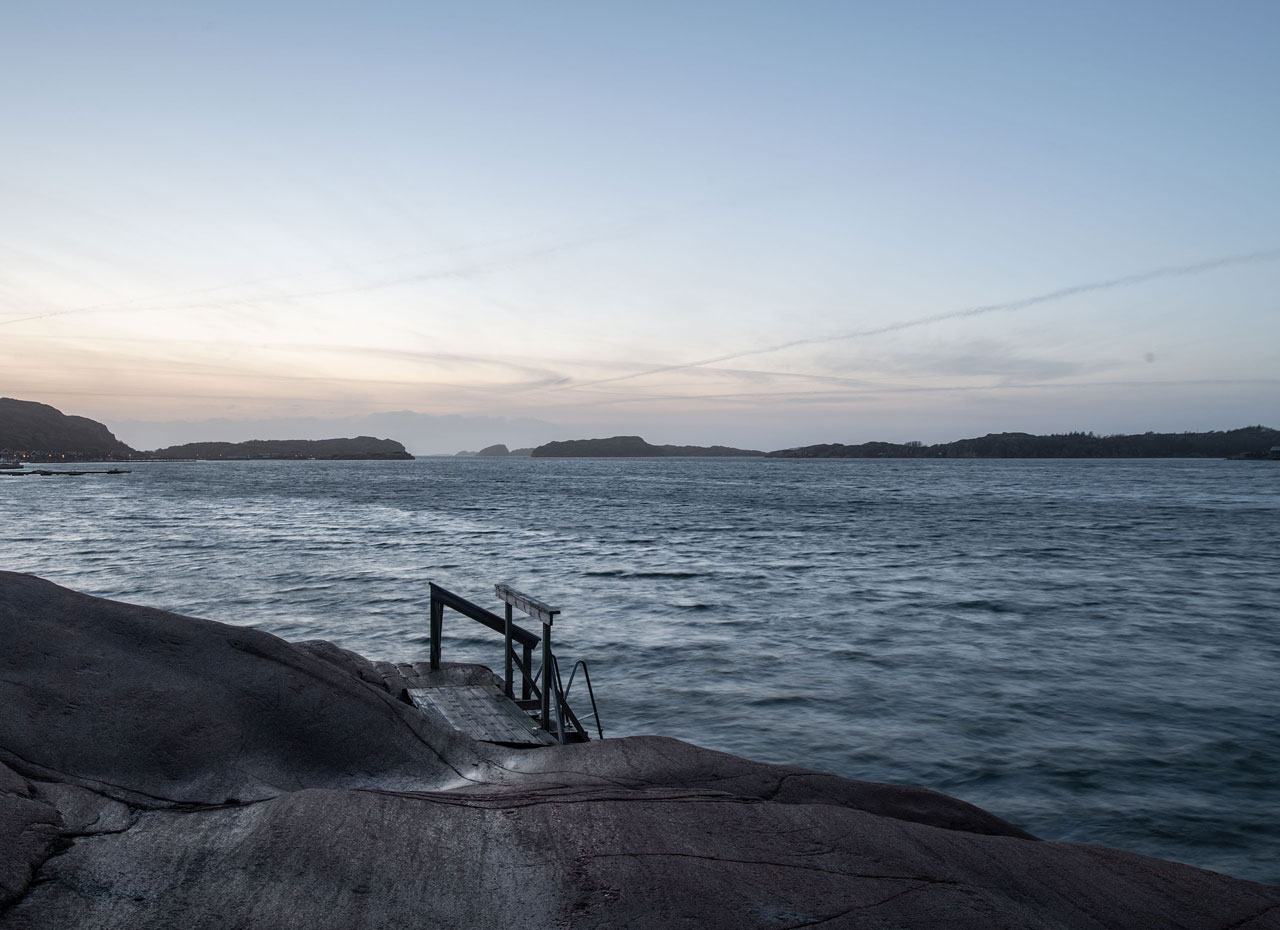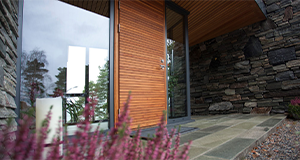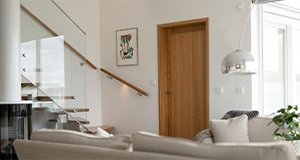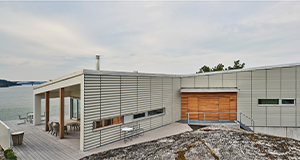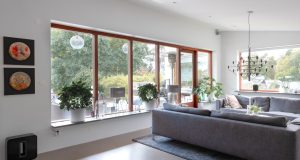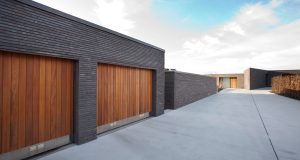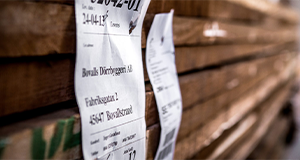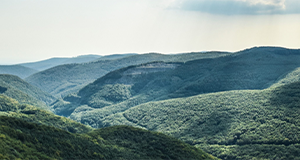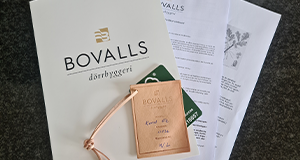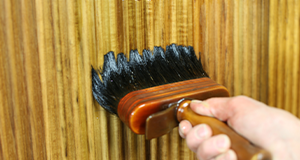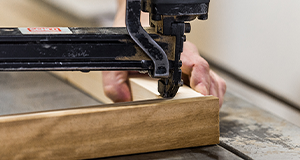The company's history, the founder remembers
Bengt Gustafsson was born in 1919 and founded AB Bengt Gustafsson’s Snickerifabrik, as the company was originally known, in 1943. At the age of 88, Bengt began writing his memoirs, covering the period from when he set up the company until the 1950s. Unfortunately he did not get any further as he became ill with cancer and died before completing his tale. Read a few extracts from his hand-written notes.
It started with the spa hotel in Bovallstrand
The first machine
– My father bought an old bandsaw, it was a home-built affair made from a curved branch of oak. The saw had a wooden frame and the wheels were two wood-spoked front wheels from a Model T Ford. The saw was driven by a little electric motor with a leather belt. I bought this off my father.
– I set it up so that it could also drive a do-it-yourself grindstone, and later on an emery wheel. We bought the bandsaw blade on a reel. You had to braze the ends together and sharpen it by hand with a triangular file. Kalle Back, the boatbuilder, taught me how to join the bandsaw blade together by brazing it with borax and silver braze. I used that saw until 1954, when I replaced it with an old cast-iron bandsaw. A new Jonsered bandsaw was bought in 1969 and is still in use today.
Building the first workshop
During the summer and autumn of 1943 I designed the spa hotel in Bovallstrand for Ragnar Persson and helped him with the build, and in return I got to demolish the old building and take whatever I could use to build the workshop. Next to the old hotel was an outbuilding that had originally been a bath house. I pulled down, dressed and saved the bricks,
which we then used to build the boiler room. I saved some of the boards and lots of piping and pipe fittings, as well as two big, well-made interior doors which were re-used as the exterior doors of the workshop.
– After Gösta had leveled the site, Brun came along and sank the posts, and Åke Berglund built the boiler room walls. Frej and Tage (Bengt’s younger brothers) helped me to build when Dad did not need their help in the timber merchants.
– For the sills and wall plates we used 5×4/5/6″ studs that were warped and could not be sold. It was the same with the floor joists, they were old and warped. For the outer walls we used 2½ x 3″ tongue and groove boards that had been set aside over the years as they had mismatched tongues and thicknesses, but we managed to build walls out of them as well. For the exterior cladding we used what was left over from building Bovallsgården Hotel; there were plenty of fine 1×4″ tongue and groove boards and fine-sawn spruce. That was enough for almost three walls. Kurt Floren, an artist and cart driver, brought the timber over by horse and cart, but sometimes we had to haul the timber from the timber merchants on a hand cart.
"My first order earned me a whole SEK 50 for 50 hours of work."
The first machines for the workshop
– Then it was time to make plans for buying the woodworking machines. Right from the start I had decided not to buy any machine with an overhead belt drive. Small, direct-drive motors and machines with circular cutters were the latest thing in the industry. One Sunday, Gustaf Back and I cycled to Fjällbacka to take a look at Hugo Andreasson’s business. He had a fine workshop with lots of machines and five men working for him. Despite this the business shut down a few years later. Hugo Andreasson was a craftsman builder and later in the 1950s he bought carpentry work from me, including some work for Ingrid Bergman’s house on Dannholmen. I remember building the kitchen for her with doors of solid oak.
Electricity for the workshop
– We naturally needed electricity for the workshop, but it turned out that the few lines that ran nearby were too small for the transformer, which was on Kaprifolgatan. There was also a transformer on Skomakarudden. I negotiated with the manager of the electricity plant, whose name was Bjarne Rydberg. I already knew him from the days when he drove Rydberg’s sausage truck.
– We agreed that I would pay the cost of running my own line from the transformer on Skomakarudden. I paid SEK 600 in cash and got a share subscription in the association. As a direct buyer from the transformer I got my electricity for a lower price. Everything worked and ran well.
Finding quality timber
– One problem in the early days was finding dry oak for thresholds. Calle Back, the boatbuilder, had a lot of freshly cut Swedish oak lying over the road at the boatyard on Badholmsvägen. I remember that Bengt Finn and I went there with our hand cart and collected reject lengths of oak that we cut into thresholds on the bandsaw. We spread them out to season in grandmother’s barn.
The first deal, excerpt from diary October 1944
My first order earned me a whole SEK 50 for 50 hours of work. A big building company in Gothenburg was building the first ice cream shop at Guleskär, in Gravarne (now Kungshamn).
– I got to sell them a few hundred building props. I bought the props from “Kapten i Säm”. It was a small truck load, which was delivered by Johnny and Åke, who had a lorry they used to haul stone from the quarry in Ävja to Bovallstrand. It was a little grey Ford V6.
Transport
The road system was not very good in those days and fuel was rationed during the war years. Boats were used instead to carry goods and passengers along the coast.
– Isidor Nordén had a cargo boat called “Aina” that picked up and unloaded goods in Bovallstrand on Saturdays, and went to Smögen, Bohus Malmön, Åstol and the Gothenburg archipelago. Freight was always very cheap. I remember how hard it was to drag the hand cart down to the boat and load it up with carpentry goods.
Types of wood
– After the war ended we began getting imports of exotic species of timber again. First to arrive were iroko, gabon, sapele and Grand Bassam mahogany. I bought an iroko log with a diameter of 60–70 mm from Harry Malmsten, a travelling salesman for the company Utländskt Trä. The log was cut by Utländskt Trä using their log bandsaw. It was cut into 2″ and 1½” boards. We stacked the log outdoors next to the workshop so that it could season. We used the iroko to make frame and filled doors. It was much later when teak began to be imported.
RAGNAR, TORE AND LEIF REMEMBERS
Ragnar Haglund started working at the joinery factory in 1946. Leif Johansson and Tore Henriksson started in 1960s. This is some of their memories from their long time working with wood and wooden doors at Bovalls Dörrbyggeri.


THE PLACE BOVALLSTRAND
“Sad and gloomy, crags and more crags, bare rock, no trees, no bushes, no greenery”. Bovallstrand has not always been regarded as a sunny holiday paradise, at least not according to this 1855 description of the West Coast community. But the 1800s high-society tourism changed that dramatically.
THE CLIMATE
The west coast of Sweden has a harsh climate that combines salt spray with high winds. The old craftsmen builders knew that doors had to be solidly constructed from good materials to withstand the weather on the west coast.
